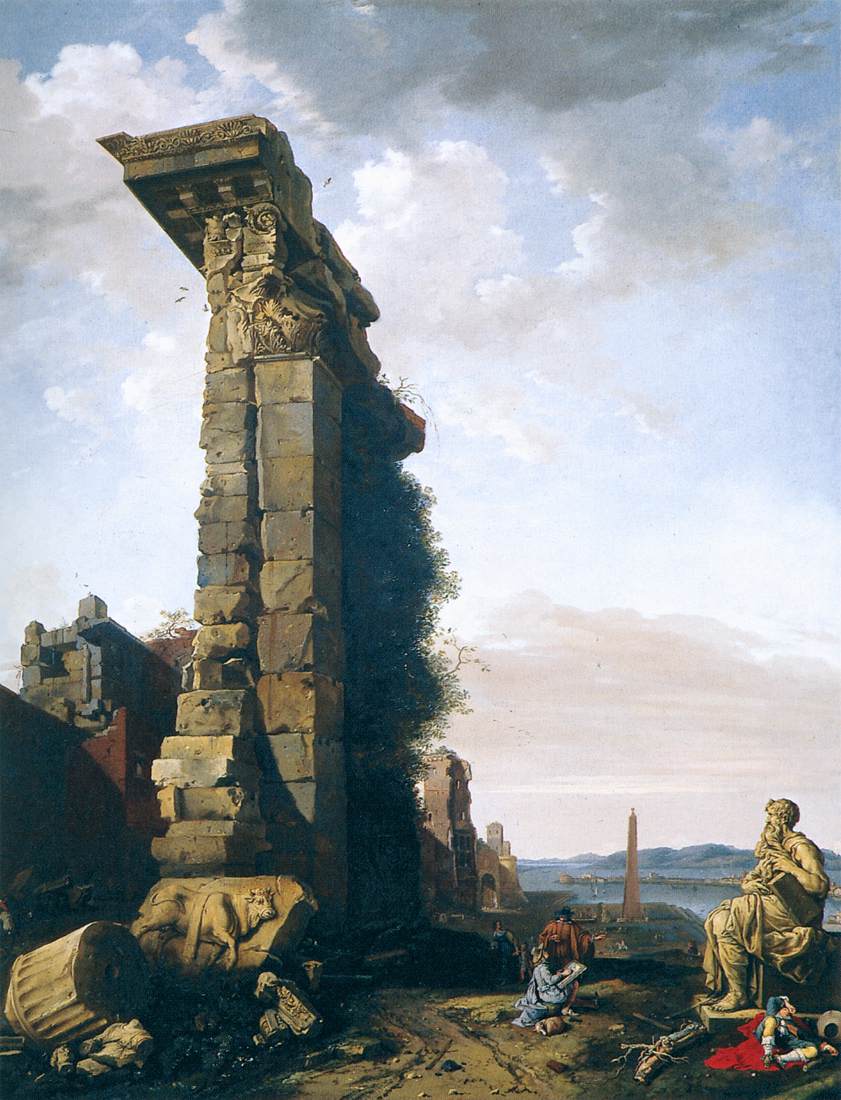Description
The painting Idealized View with Roman Ruins, Sculptures, and a Port by the artist Bartholomeus Breenbergh is a work that captivates with its beauty and complexity. Breenbergh's artistic style is characterized by his ability to create mystical and mysterious atmospheres through the representation of landscapes and ancient ruins.
The painting's composition is impressive, as Breenbergh manages to unite architectural elements from different times and places into a single image. The presence of Roman ruins and classical sculptures mixes with medieval and Renaissance architecture, creating a sensation of time and space suspended in the air.
The coloring of the painting is another aspect that stands out, as Breenbergh uses a palette of warm and soft tones that blend together to create a sense of harmony and balance. Earth and gold tones predominate in the work, suggesting a connection to nature and the earth.
The history of the painting is fascinating, as it is believed to have been commissioned by King Charles I of England in the 17th century. The work was part of the royal collection until it was sold at auction in the 19th century. It is currently in the collection of the National Gallery in London.
A little known aspect of the painting is that Breenbergh was inspired by the ruins and monuments he visited during his travels in Italy and Greece. The work is an idealized representation of his vision of ancient Rome and classical Greece, suggesting a fascination with the culture and art of antiquity.
In conclusion, the painting Idealized View with Roman Ruins, Sculptures, and a Port by Bartholomeus Breenbergh is an impressive work that combines architectural and artistic elements from different times and places in a single image. Its artistic style, composition, colouring, history and little-known aspects make it a unique and unforgettable work of art.

